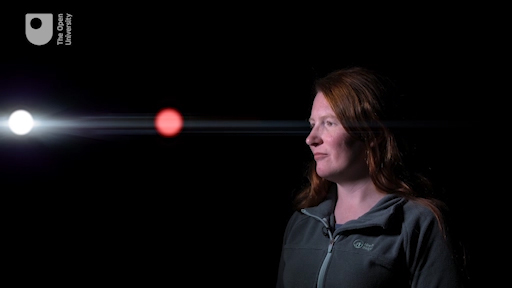2 Variable stars
In this video, Jo explains three different causes of variability: pulsating stars, such as those passing through the instability strip; eclipsing binary stars; and finally even more dramatic exploding stars.
Download this video clip.Video player: boc_aot_1_video_week7_2_variable-stars.mp4


Transcript
INSTRUCTOR:
Suzanne mentioned at the beginning of this week there are a variety of reasons why a star could be varying in luminosity. One of those is if it's a pulsating star. It's physically getting bigger and smaller in size, and therefore its brightness is getting greater and lesser. This can happen over a period of a fraction of a day all the way up to many thousands of days. But the variation is generally quite small. It's only a couple of magnitudes.
A second common reason that a star might be varying in luminosity is if it's a transiting star. It's physically got something passing between that star and you as the observer. This particular area of science is very much at the forefront, because it's the method with which we are finding an awful lot of transiting exoplanets. But the most common scenario is that you have one star passing in front of another where one star is much fainter than the other. This gives you a momentary dip in the amount of light that you see from the system overall.
The final type is a cataclysmic variable star. These stars quite often don't survive the process, so they are by far the most dramatic variation in luminosity that you will see, in excess of 20 magnitudes. Smaller stars might survive the process. But a large star, such as Betelgeuse in Orion, will almost certainly explode to such an extent that it would destroy the star completely. This is likely to happen relatively soon in astronomical terms. And there are many scientists that have spent a lot of time trying to work out exactly when this is going to happen, but it's extremely unpredictable.
Interactive feature not available in single page view (see it in standard view).
In the next sections, you will look at each type of variable in turn.
